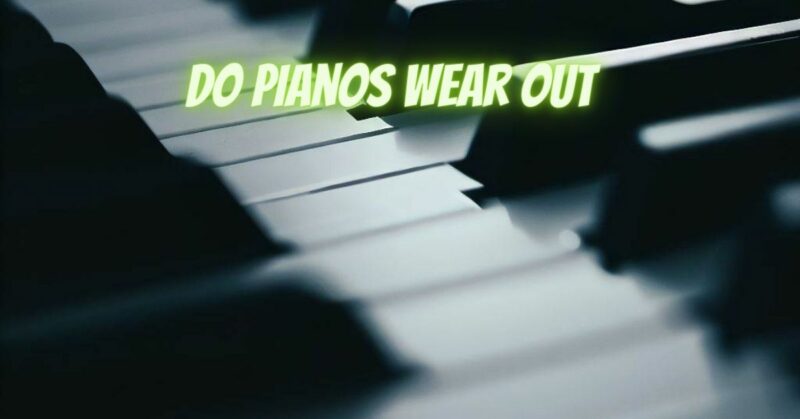Pianos, cherished for their captivating melodies and timeless elegance, are often considered long-lasting instruments. However, like any mechanical object, pianos do experience wear and tear over time. In this article, we will delve into the concept of pianos wearing out, exploring the factors that contribute to their deterioration and discussing ways to mitigate the effects of aging.
- Components Prone to Wear: Pianos consist of numerous components that are susceptible to wear and aging. The action mechanism, including the keys, hammers, and dampers, undergo repetitive movements during playing, leading to gradual wear. Additionally, strings may lose their tonal brilliance and elasticity over time, affecting the piano’s overall sound quality. Other parts, such as felts, bushings, and pins, may also wear out or deteriorate, affecting the instrument’s performance.
- Frequency and Intensity of Use: The lifespan of a piano can be influenced by the frequency and intensity of its usage. Pianos that are heavily played, such as those in professional concert halls or music schools, experience more significant wear due to increased mechanical stress. Conversely, pianos that receive lighter and less frequent use may exhibit slower wear progression.
- Environmental Factors: The environment in which a piano resides greatly impacts its longevity. Fluctuations in temperature and humidity levels can lead to the expansion and contraction of the wooden components, potentially causing structural issues over time. Exposure to excessive moisture, dryness, direct sunlight, or extreme temperature changes can accelerate wear and damage.
- Maintenance and Care: Regular maintenance and proper care play a vital role in prolonging a piano’s lifespan. Routine tuning, typically done once or twice a year, helps maintain proper pitch and prevents additional strain on the instrument. Regular cleaning, climate control, and addressing issues promptly through professional servicing can minimize wear and extend the life of a piano.
- Restoration and Renovation: When a piano starts showing signs of wear, restoration and renovation can breathe new life into it. Skilled technicians can replace worn-out components, refinish the cabinet, or even rebuild the piano if necessary. These restoration efforts can significantly extend the instrument’s lifespan, revitalizing its sound, appearance, and functionality.
- Personal Connection and Sentimental Value: Pianos often hold sentimental value, becoming treasured family heirlooms or cherished pieces of musical history. Even if wear and aging occur, the emotional connection and historical significance can outweigh the physical deterioration, making the instrument an irreplaceable part of one’s life.
Conclusion:
While pianos are not immune to wear and tear, they can endure for many decades with proper care, maintenance, and occasional restoration work. Components prone to wear can be repaired or replaced, ensuring the piano’s continued functionality and sonic beauty. By understanding the factors that contribute to a piano’s deterioration and taking proactive steps to mitigate them, owners can enjoy the company of their musical companion for generations. With attentive care, pianos can withstand the test of time and continue to inspire and evoke emotions for years to come.


